Focused Mirror Blazed Diffraction Grating Project
An On-Going and (Yet) Incomplete Project
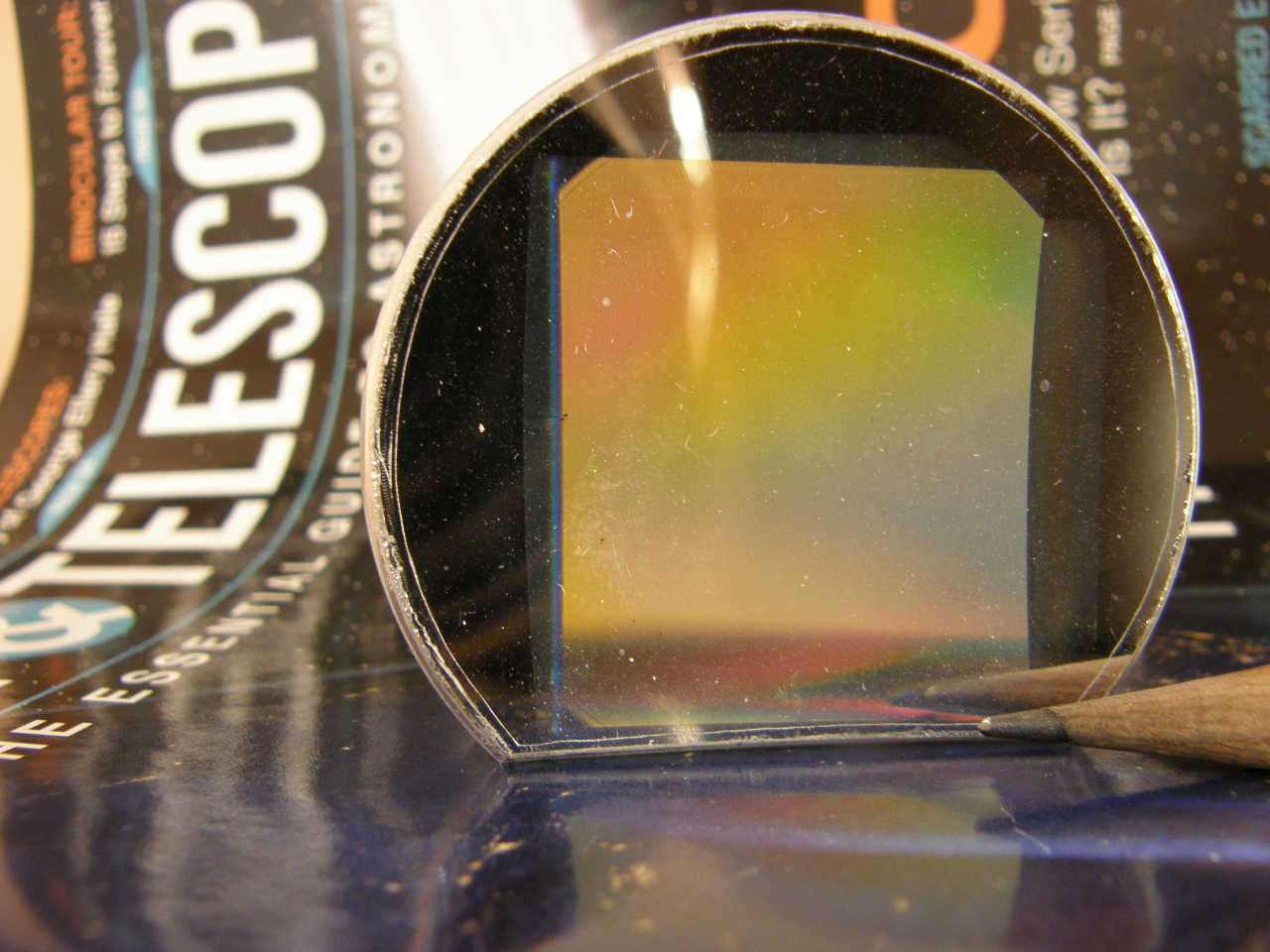
I obtained from eBay this blazed, mirrored, focused diffraction grating, which probably came from a decommissioned laboratory spectroscope of the sort that would be used in a medical testing facility.
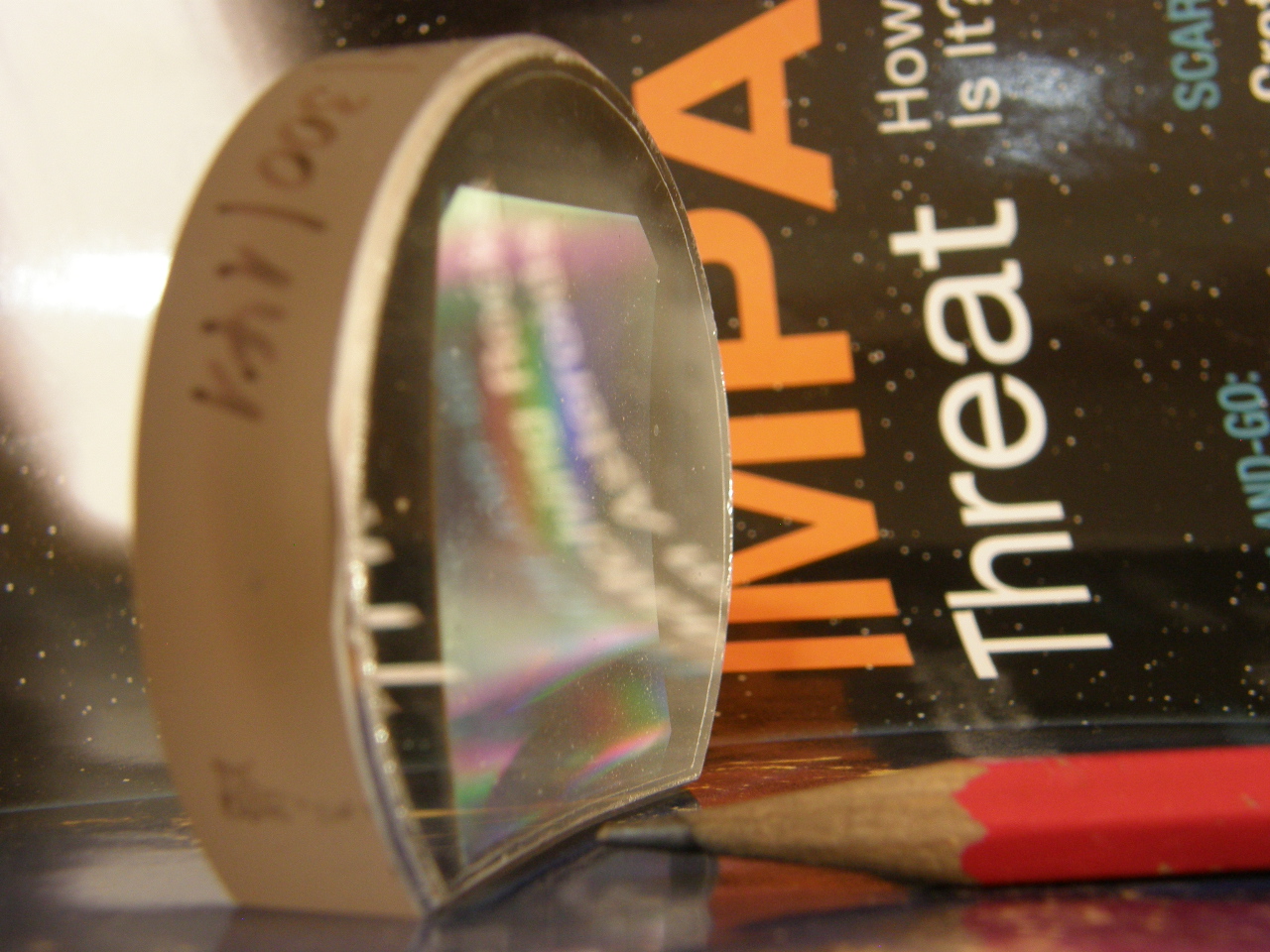
This is a side view of the grating. Notice the pencil point for scale.
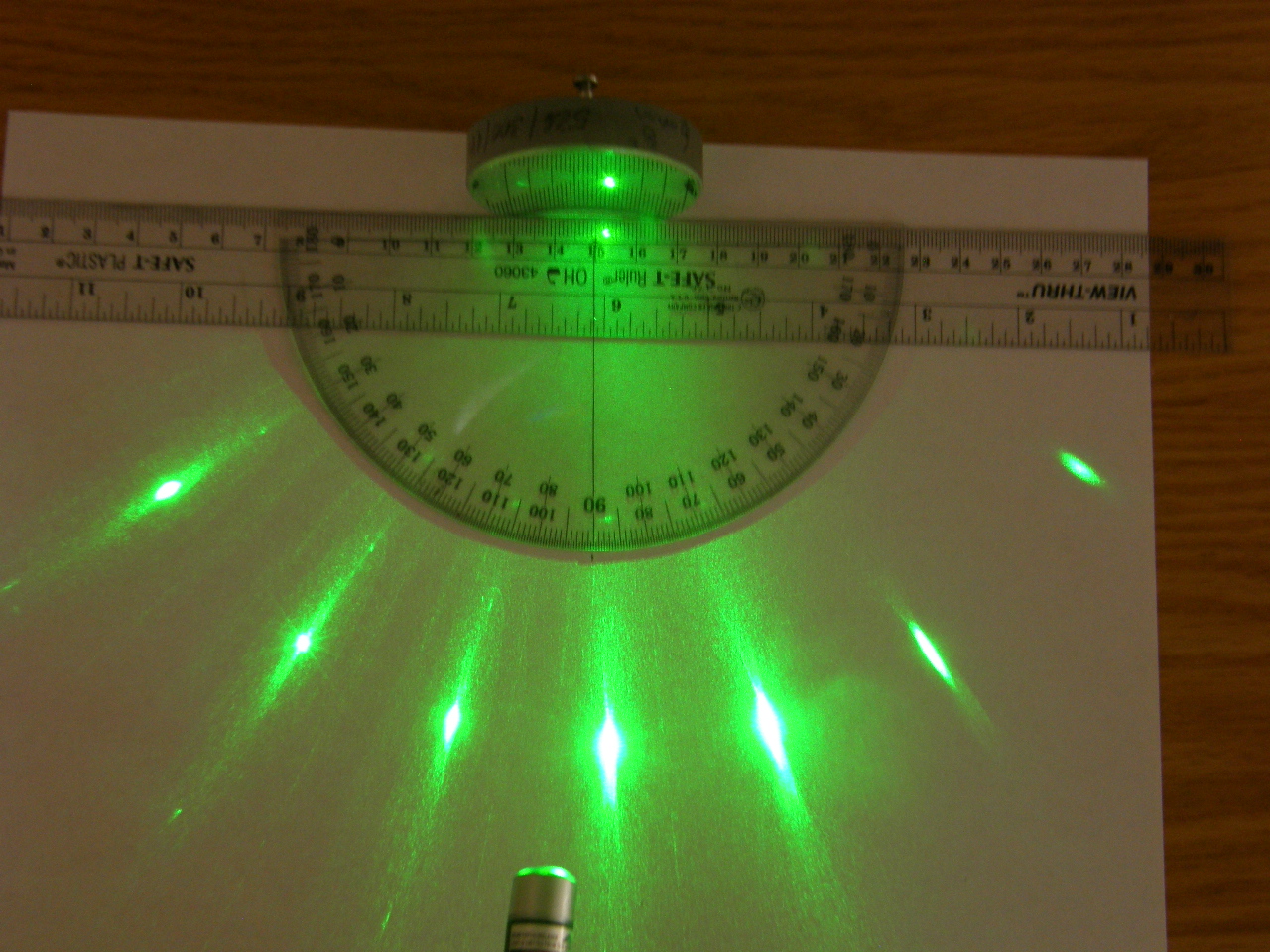
In this image, which is viewed from above, I am illuminating it along its geometric axis with a green laser pointer. Because it is blazed, the 1st order diffraction beam to the right of center is optimized relative to all others.
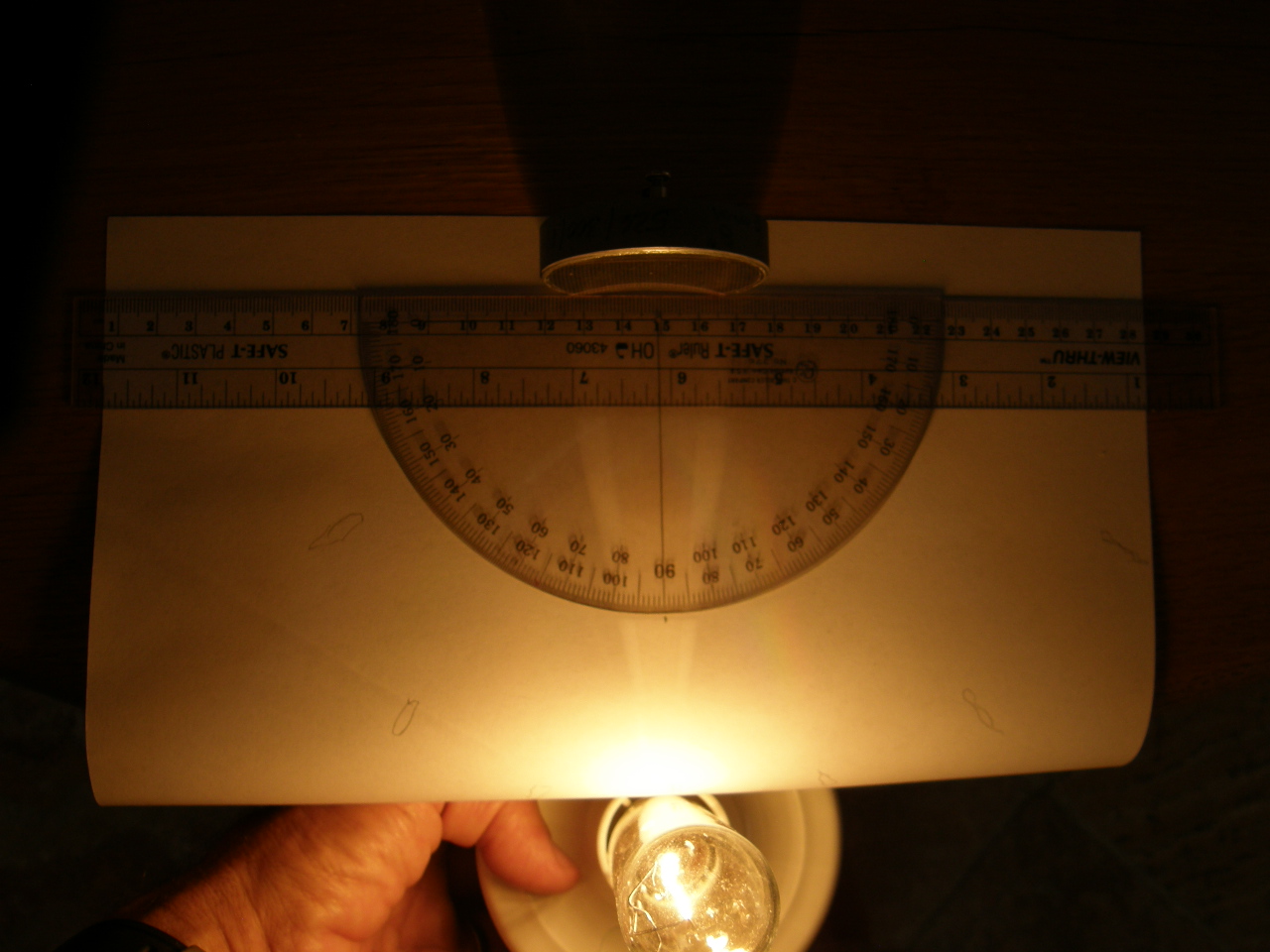
I repeat the above, but use instead a single filment light bulb as the light source.

Notice the full continuous spectrum is concentrated about 20 degrees to the right of the light source path.
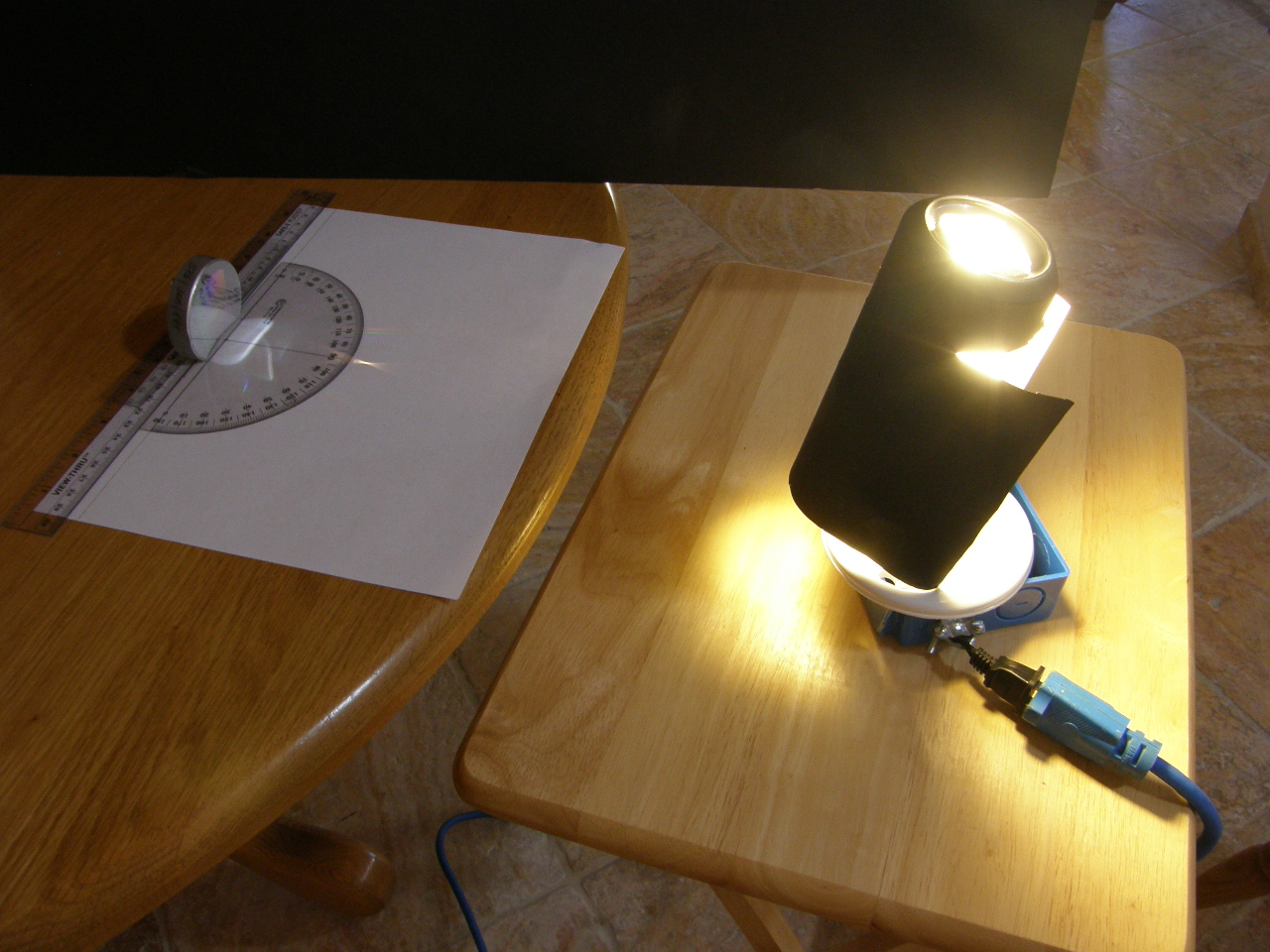
Here I set up a compact fluorescent light bulb as a mercury emission line source and I cover it with an opened soda can into which I have cut a thin slit.
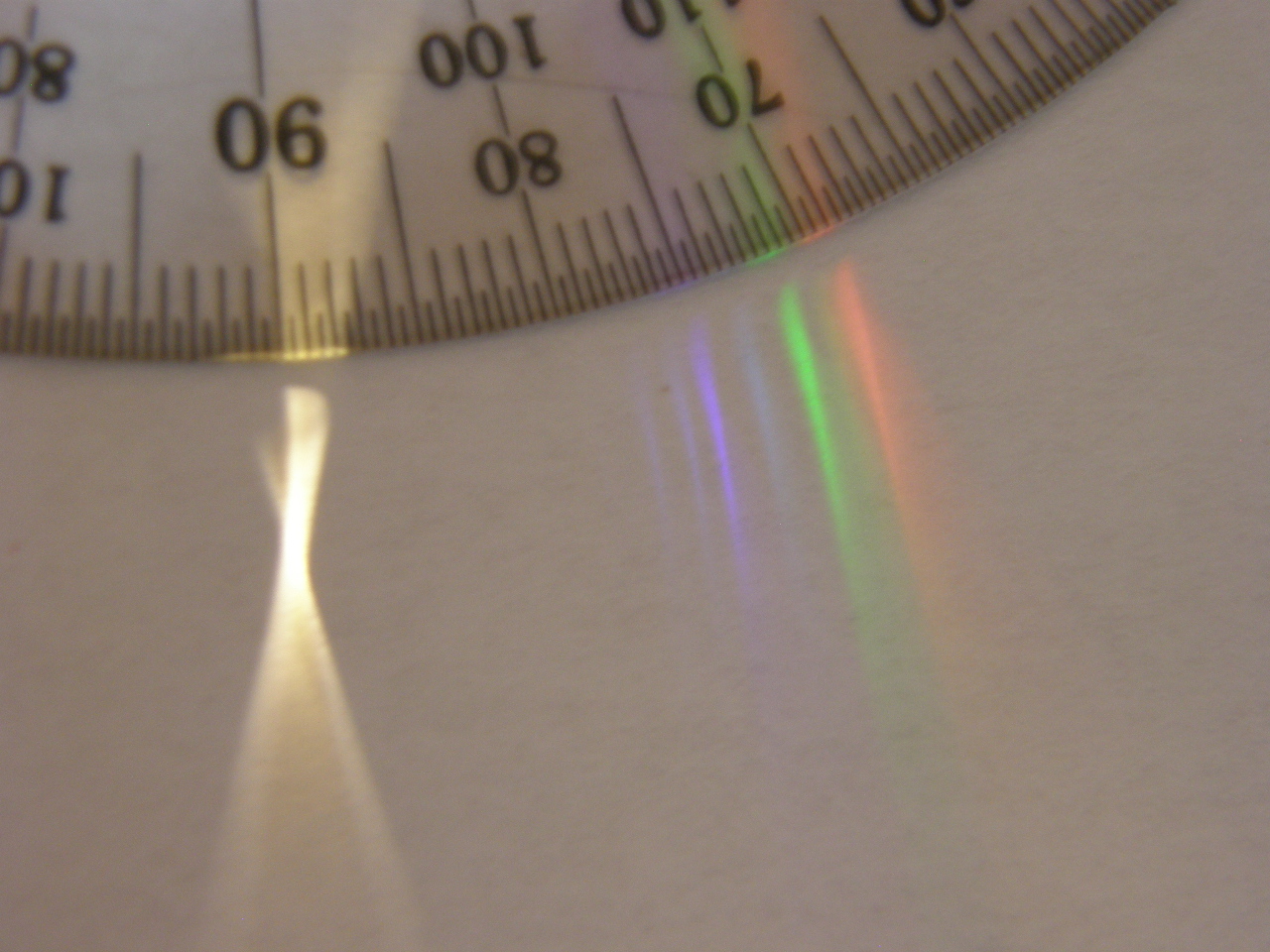
Here the compact fluorescent bulb is shining through a thin slit as the light source. Notice the mercury emission lines are focused in the optimized first-order spectrum to the right of the 90 degree mark of the protractor. The mirror diameter is 53 mm with a focal length of only 67 mm, so the concave diffraction grating mirror has a focal ratio of 1.25. Such a concave system is self-focusing.

I mount the mirrored concave blazed diffraction grating on my Canon T4i digital camera without any lenses to form an image directly on the chip. I employ a first-surface mirror to separate the camera body from the incoming light path.
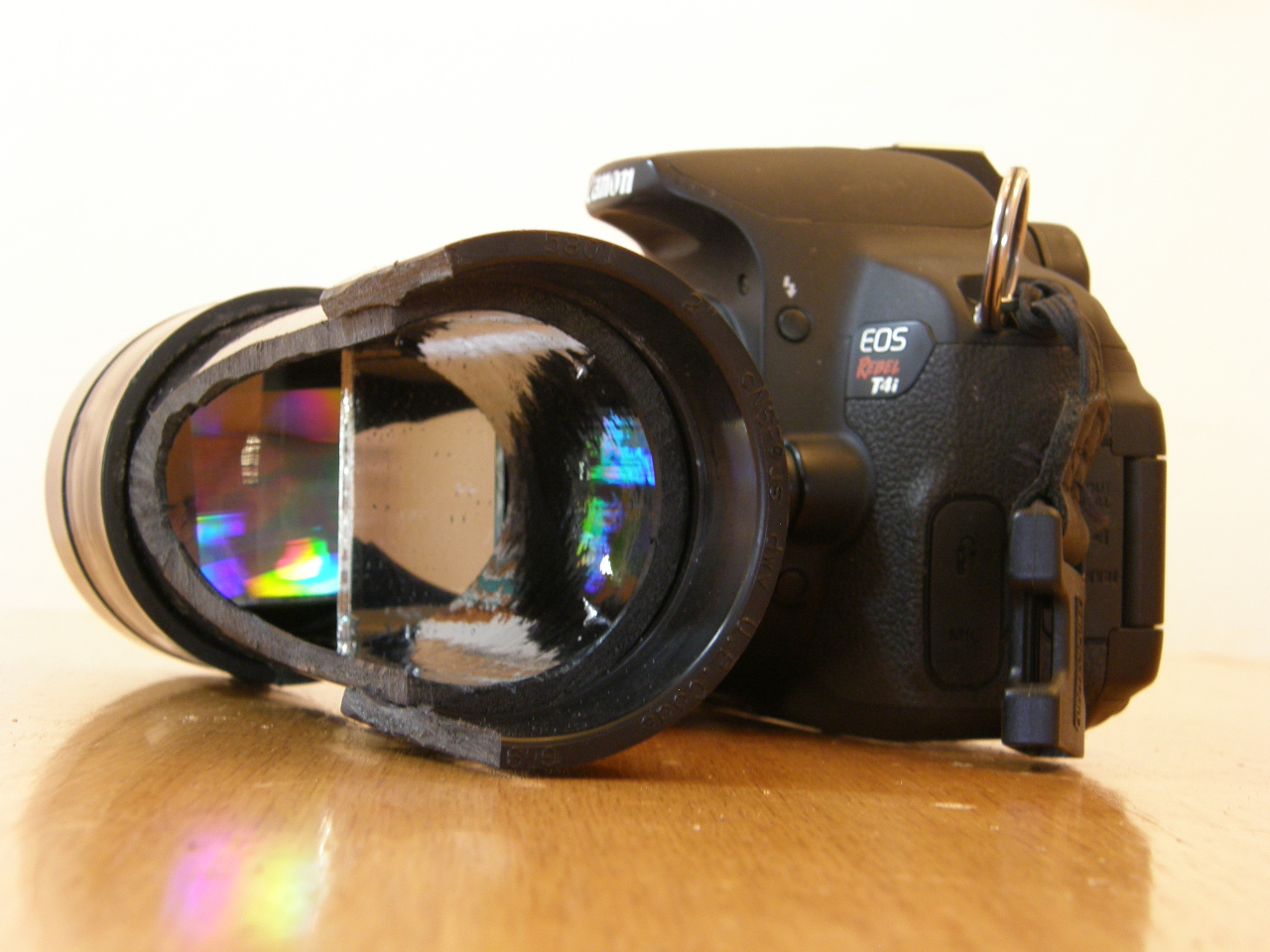
The short (67 mm) focal length works for near-by objects, but is too far from the camera sensor for objects at infinity, a situation that limits its utility for use with astronomical applications.
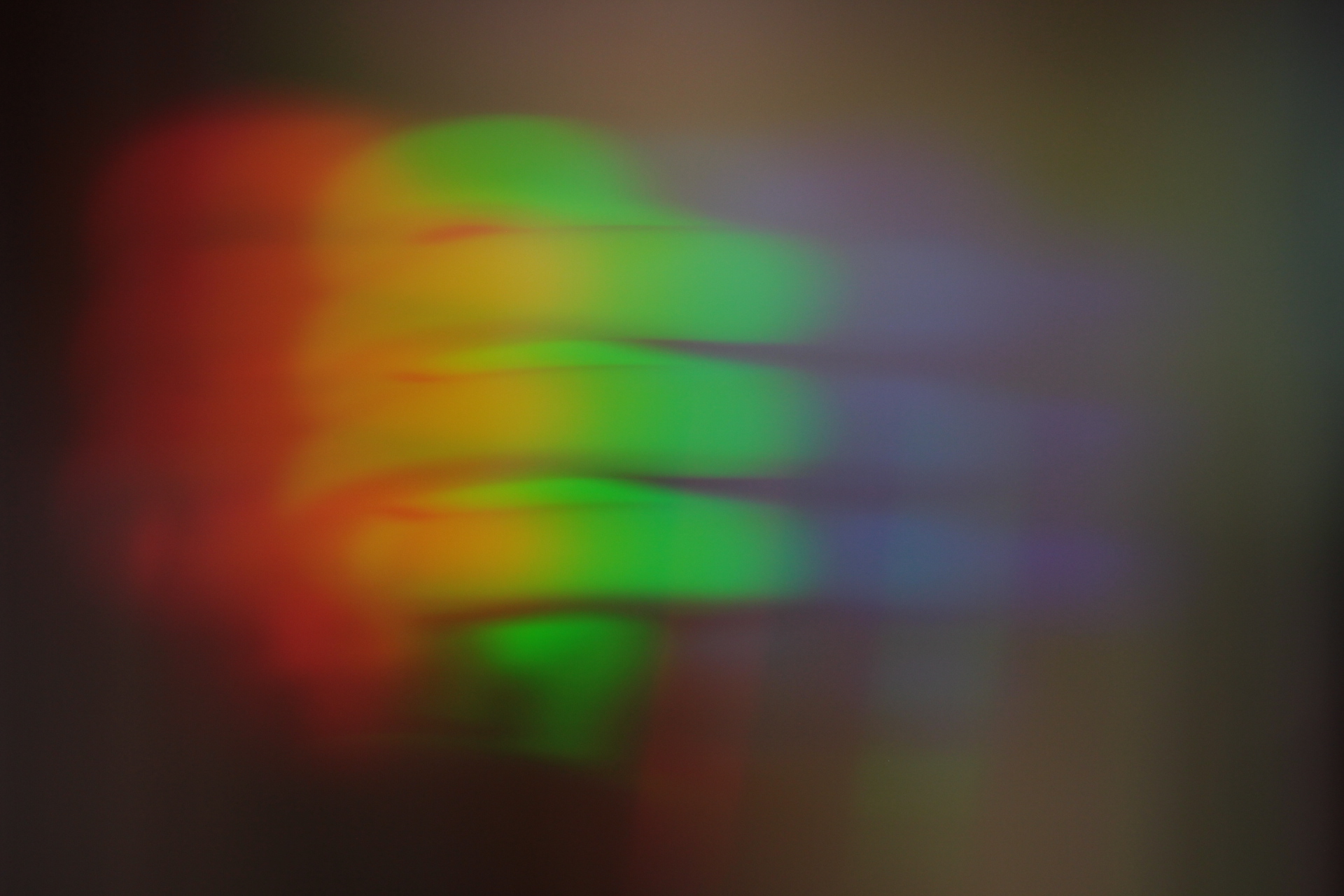
Here is an image of the compact fluorescent light bulb in its constituent emission colors that I made with the device above. So for objects at intermediate distances, the system works well.
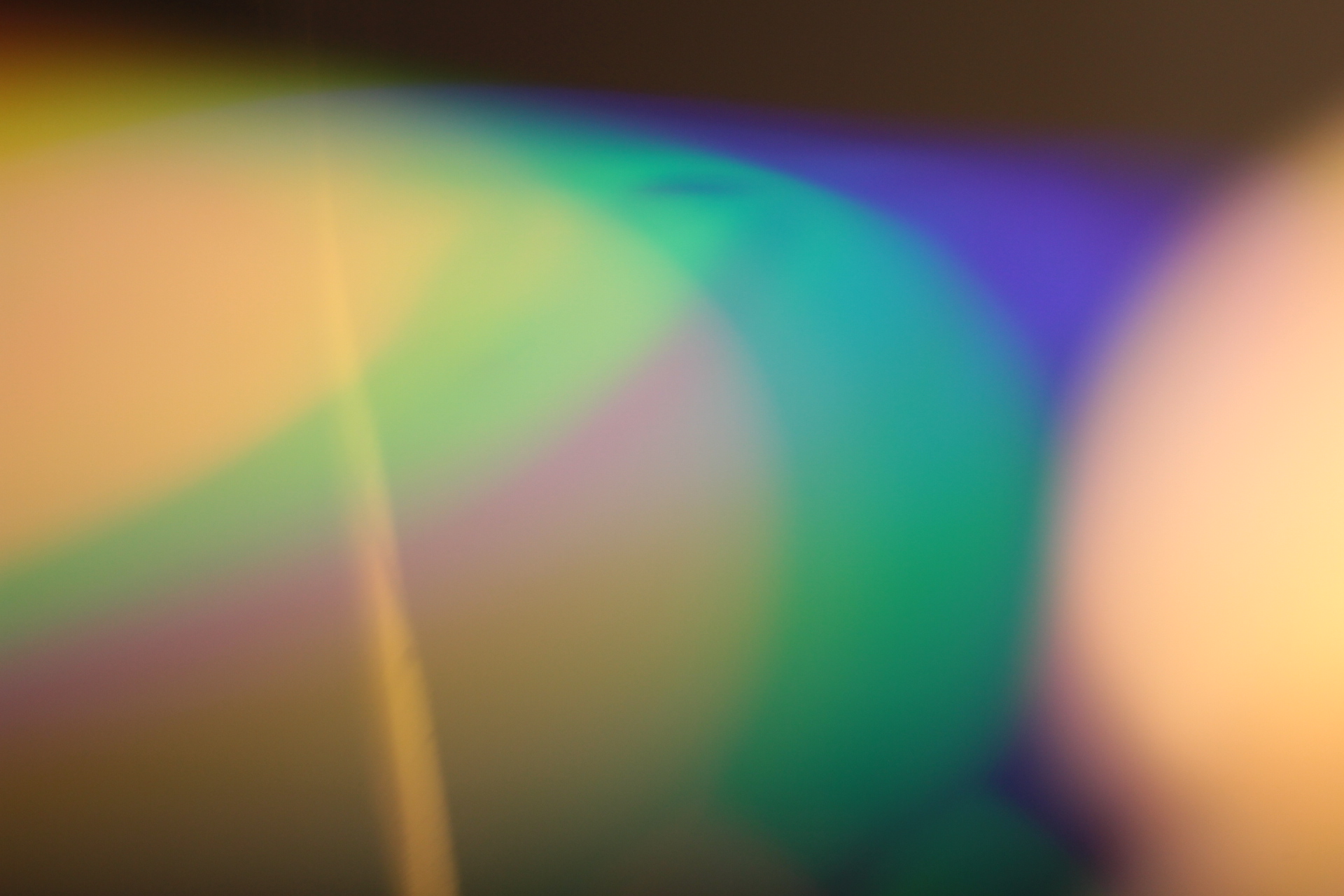
Again, the compact fluorescent light bulb is imaged in its constituent emission colors with my device in an even closer view than the previous picture. So my device works well for near-by objects, but that isn't what I wanted to achieve. What I want is to image objects that are located at infinity, which is the typical astronomical situation.